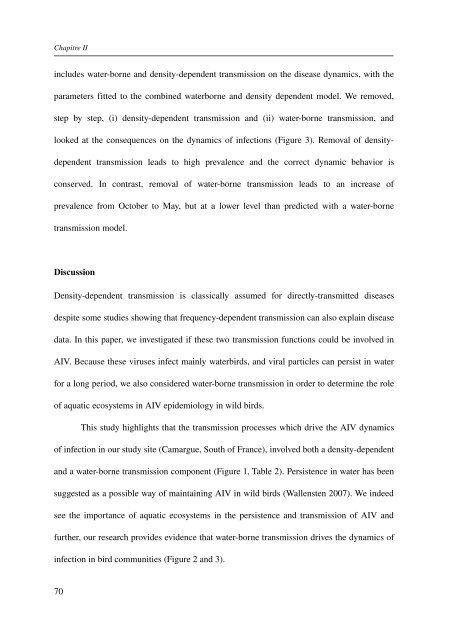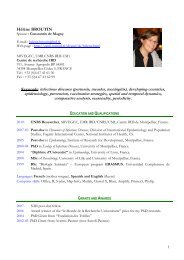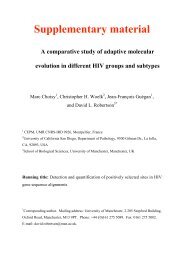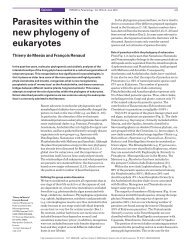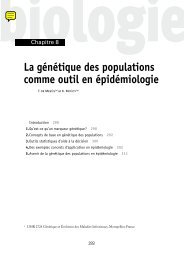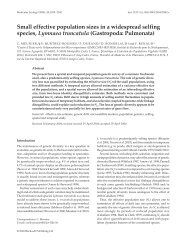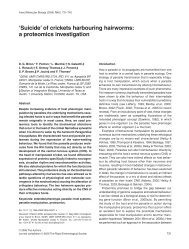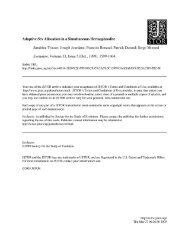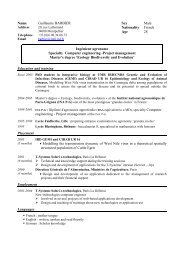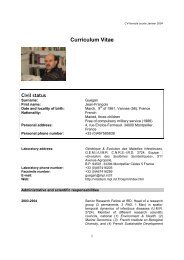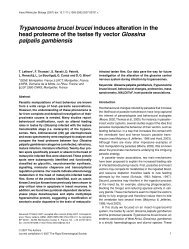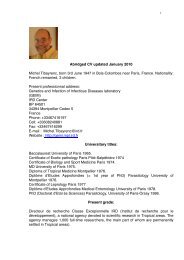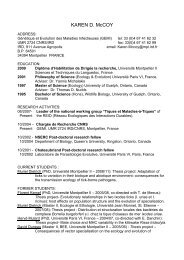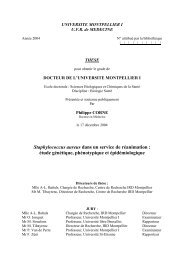écologie des virus influenza aviaires en Camargue - IRD
écologie des virus influenza aviaires en Camargue - IRD
écologie des virus influenza aviaires en Camargue - IRD
Create successful ePaper yourself
Turn your PDF publications into a flip-book with our unique Google optimized e-Paper software.
Chapitre IIinclu<strong>des</strong> waterborne and d<strong>en</strong>sitydep<strong>en</strong>d<strong>en</strong>t transmission on the disease dynamics, with theparameters fitted to the combined waterborne and d<strong>en</strong>sity dep<strong>en</strong>d<strong>en</strong>t model. We removed,step by step, (i) d<strong>en</strong>sitydep<strong>en</strong>d<strong>en</strong>t transmission and (ii) waterborne transmission, andlooked at the consequ<strong>en</strong>ces on the dynamics of infections (Figure 3). Removal of d<strong>en</strong>sitydep<strong>en</strong>d<strong>en</strong>ttransmission leads to high preval<strong>en</strong>ce and the correct dynamic behavior isconserved. In contrast, removal of waterborne transmission leads to an increase ofpreval<strong>en</strong>ce from October to May, but at a lower level than predicted with a waterbornetransmission model.DiscussionD<strong>en</strong>sitydep<strong>en</strong>d<strong>en</strong>t transmission is classically assumed for directlytransmitted diseases<strong>des</strong>pite some studies showing that frequ<strong>en</strong>cydep<strong>en</strong>d<strong>en</strong>t transmission can also explain diseasedata. In this paper, we investigated if these two transmission functions could be involved inAIV. Because these <strong>virus</strong>es infect mainly waterbirds, and viral particles can persist in waterfor a long period, we also considered waterborne transmission in order to determine the roleof aquatic ecosystems in AIV epidemiology in wild birds.This study highlights that the transmission processes which drive the AIV dynamicsof infection in our study site (<strong>Camargue</strong>, South of France), involved both a d<strong>en</strong>sitydep<strong>en</strong>d<strong>en</strong>tand a waterborne transmission compon<strong>en</strong>t (Figure 1, Table 2). Persist<strong>en</strong>ce in water has be<strong>en</strong>suggested as a possible way of maintaining AIV in wild birds (Wall<strong>en</strong>st<strong>en</strong> 2007). We indeedsee the importance of aquatic ecosystems in the persist<strong>en</strong>ce and transmission of AIV andfurther, our research provi<strong>des</strong> evid<strong>en</strong>ce that waterborne transmission drives the dynamics ofinfection in bird communities (Figure 2 and 3).70


